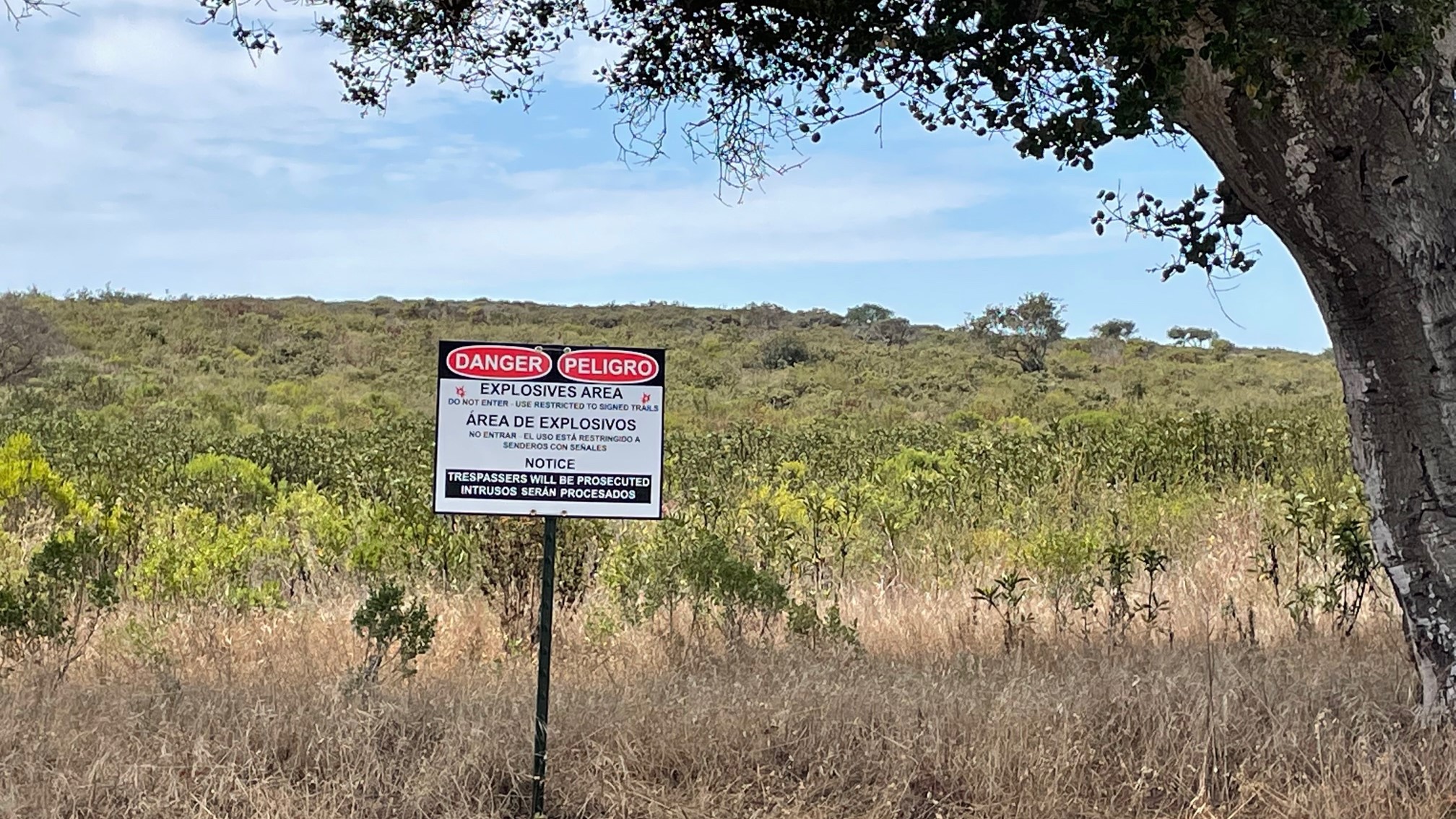

The Army and the Bureau of Land Management are urging visitors to the Fort Ord National Monument in central California to please stick to only official hiking trails in the park. Going off those paths puts hikers at risk of running into the many unexploded munitions on the former Army installation, ranging from grenades to artillery rounds and bombs.
The warning, shared by the Bureau of Land Management this past week, came after the Army discovered several unofficial and unauthorized trails throughout the Army-base-turned-national monument. The U.S. Army, which is overseeing an ongoing cleanup of the space following decades of munitions training, found a series of unauthorized trails and jumps near Barloy Canyon Road.
“Unauthorized trail building and use of unsigned paths at the Fort Ord National Monument is dangerous,” Eric Morgan, the manager of Fort Ord National Monument Manager Eric Morgan, said in the BLM statement.. “Creating illegal routes exposes visitors to unexploded ordnance hazards, destroys endangered plants and wildlife habitat, and is costly to remedy.”
Despite being open to the public, the decommissioned base still presents dangers. The base was used heavily for munitions training over the nearly eight decades it was in operations. A cleanup operation is ongoing, with crews looking for and trying to safely remove “artillery projectiles, rockets, hand grenades, practice land mines, pyrotechnics, bombs, demolition materials and other items,” according to the cleanup operation’s website.
Subscribe to Task & Purpose Today. Get the latest military news and culture in your inbox daily.
The national monument, jointly overseen by the U.S. Army and federal Bureau of Land Management, encompasses 14,560 acres. The park and national monument is a popular hiking destination, so much so that additional paths were added in 2018. There are now more than 86 miles of trails in the site. Those paths are carefully marked and away from any of the potentially unexploded ordnance.
Fort Ord was an Army installation for almost eight decades. From 1917 to 1994 it served as an artillery and maneuver training site as well as the home to the 7th Infantry Division. It shut down in 1994 as part of a wider reorganization of military facilities after the end of the Cold War. It was eventually turned into a national monument. A coastal part of the former Army base was turned into the Fort Ord Dunes State Park, run by the state of California. The Army’s effort to clean up years of unexploded munitions started when the base closed.
Beyond the physical danger of unexploded munitions, the unauthorized trails present legal issues as well, according to Joelle Lobo, the Army’s Base Realignment and Closure Environmental Coordinator.
“Violations of Army property rules and restriction are subject to penalties.” Lobo said.
More information on the trails, including maps of authorized ones, can be found at the Bureau of Land Management’s website for Fort Ord.
The latest on Task & Purpose
- Air Force fires two medical commanders at Joint Base Charleston
- Navy fires commodore of Naval Special Warfare Group Eight
- Families at Edwards Air Force Base living in RVs for housing relief
- Niger cuts ties with US military
- Navy has fired at least 3 commanding officers for DUIs in 2024
